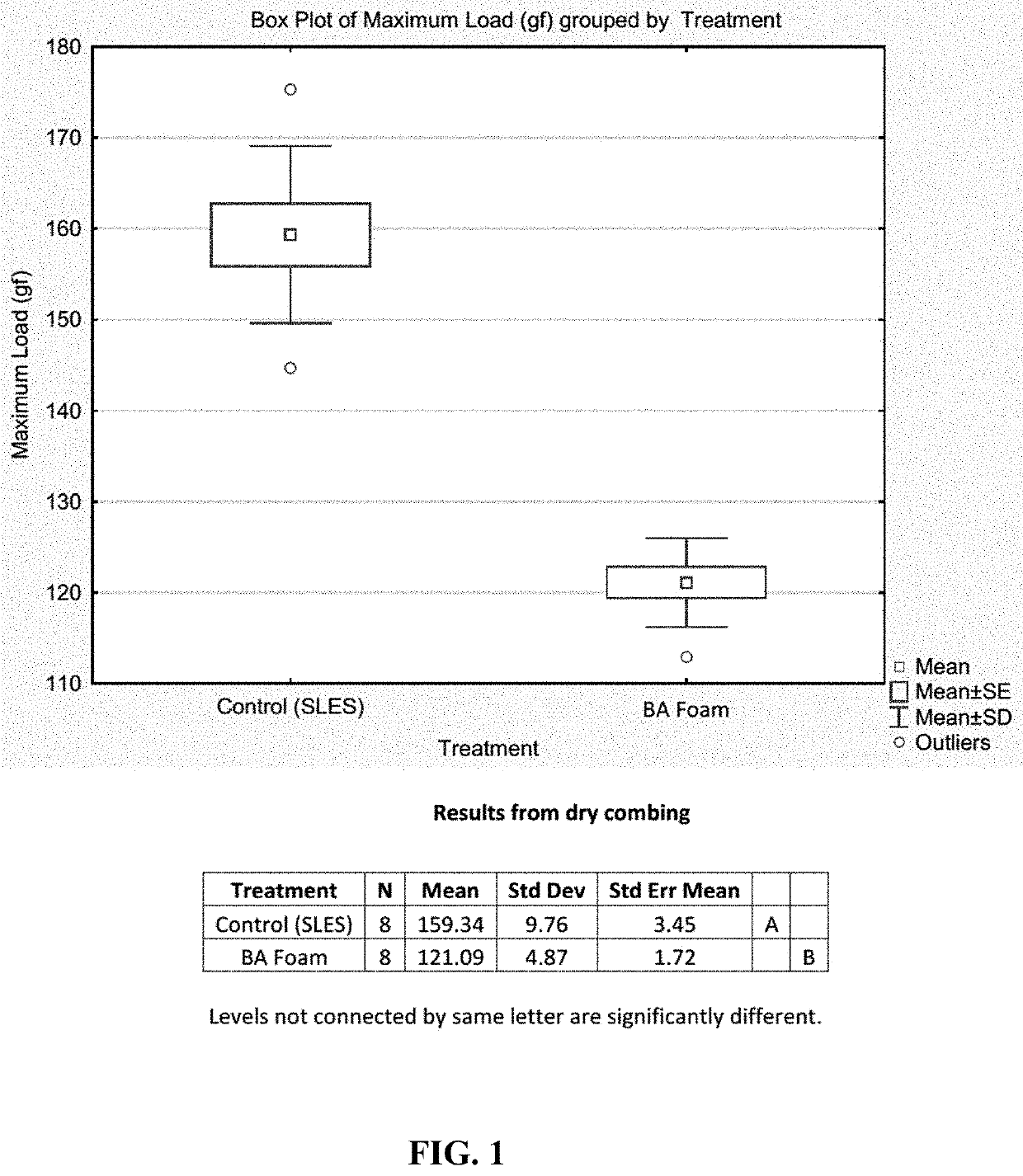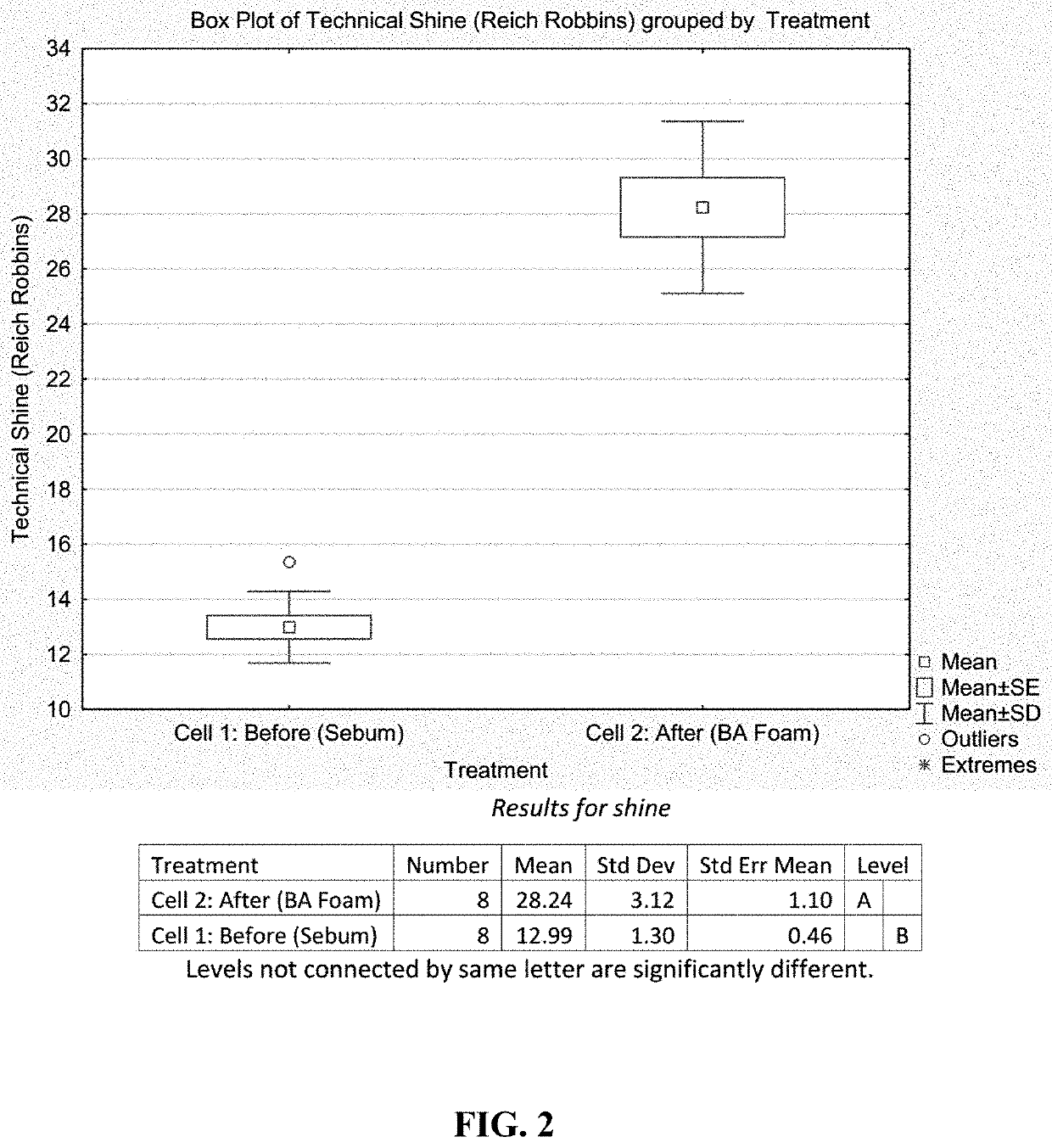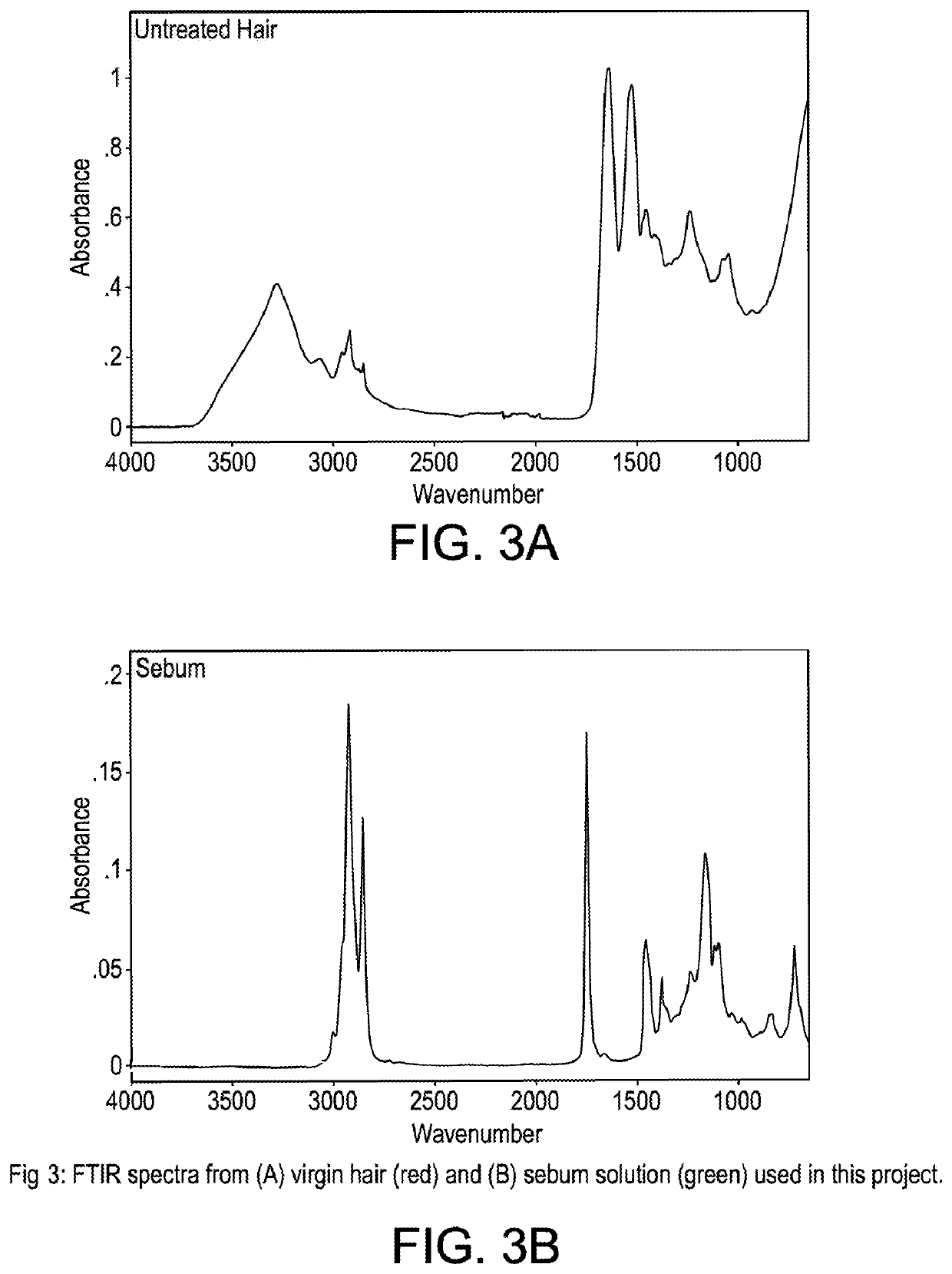Rinse-free shampoo composition
a shampoo and shampoo technology, applied in the field of shampoo compositions, can solve the problems of hair not feeling fully clean, consumers' unsatisfactory, and wet hair,
- Summary
- Abstract
- Description
- Claims
- Application Information
AI Technical Summary
Benefits of technology
Problems solved by technology
Method used
Image
Examples
example 1
[0070]A rinse-free shampoo according to the present disclosure was prepared. The composition is provided in Table 1 (with weight percentage ranges being based on the total weight of the respective rinse-free shampoo composition).
TABLE 1Composition of the Rinse-free ShampooMousse of the Present DisclosureINCIWeight PercentagePhaseNameRangeLiquid PhaseWater50-70Alcohol Denat. 1-15Cocamidopropyl betaine0.01-5 PEG-8 Dimethicone0.01-2 Phenyloxyethanol0.01-1 Fragrance0.01-0.2 Extract0.01-0.2 Solid PhaseDistarch Phosphate4-8Gas PhaseIsoButane 4-10Propane 4-10Butane10-20
[0071]When dispensed, the mousse according to the composition of Table 1 above had a density of about 0.1-0.2 g / cm3. When applied to rinse-free hair, the foam quickly goes from wet to rinse-free and does not leave any residue.
example 2
[0072]The dry coming force for hair treated with a foam according to Example 1 above versus the dry coming force of a control-treated tress was evaluated. The primary technical function of many conditioning products is to lubricate the hair surface, and, in doing so, facilitate manageability and provide detangling benefits and lower combing friction. A common and highly consumer-relevant approach for measuring this lubrication involves an instrumental combing experiment. Testing involves use of an Instron tensile tester to measure frictional forces while a hair tress is pulled through a comb
[0073]Eight (8) European Medium Brown hair tresses (supplied by International Hair Importers) (3.0 g, 8″ length, 1″ wide) were used per treatment group. Before treatment, tresses were bleached using standard bleaching procedure with 6% hydrogen peroxide solution at pH 10.2 and 40° C. for 40 min in total.
[0074]Tresses were standardized by treating all tresses with 15 wt. % sodium laureth sulfate (...
example 3
[0079]The performance of the rinse-free shampoo composition according to Example 1 above was evaluated for shine effect on treated hair. The increase in shine on sebum-treated hair as a result of applying the Example rinse-free shampoo was measured, as described below.
[0080]Eight (8) European Medium Brown hair tresses (supplied by International Hair Importers) (3.0 g, 8″ length, 1″ wide) were used per treatment group. Before treatment, tresses were bleached using standard bleaching procedure with 6% hydrogen peroxide solution at pH 10.2 and 40° C. for 40 min in total.
[0081]Tresses were standardized by treating all tresses with 15 wt. % sodium laureth sulfate (SLES), 30% the weight of the tress of 15% SLES was applied on wet hair, massaged for 30 seconds, and rinsed for 30 s (40 C, 1 GPM flow rate). The tresses were allowed to dry overnight at 60% relative humidity and ambient temperature.
[0082]Each of the tresses was treated with 1 g of sebum, which was applied and worked into each ...
PUM
| Property | Measurement | Unit |
|---|---|---|
| viscosity | aaaaa | aaaaa |
| viscosity | aaaaa | aaaaa |
| pH | aaaaa | aaaaa |
Abstract
Description
Claims
Application Information
 Login to View More
Login to View More - R&D
- Intellectual Property
- Life Sciences
- Materials
- Tech Scout
- Unparalleled Data Quality
- Higher Quality Content
- 60% Fewer Hallucinations
Browse by: Latest US Patents, China's latest patents, Technical Efficacy Thesaurus, Application Domain, Technology Topic, Popular Technical Reports.
© 2025 PatSnap. All rights reserved.Legal|Privacy policy|Modern Slavery Act Transparency Statement|Sitemap|About US| Contact US: help@patsnap.com



